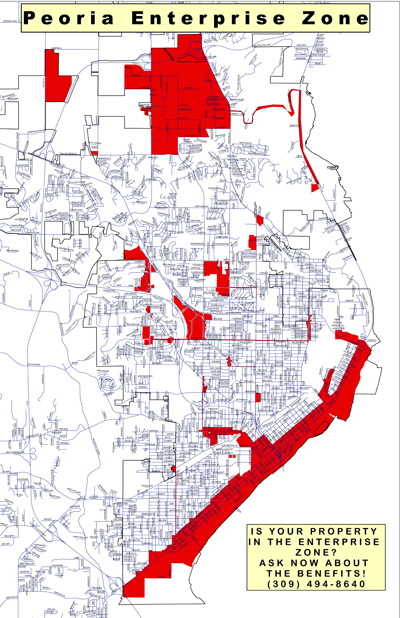The City of Peoria has released a new report on the supposed success of the City’s “growth cell” strategy.
The report states, “based on the calculations and assumptions used in this report, the following expenditures and revenues are reported for the Growth Cells from 1996 to 2010:”
| Revenue | $102,276,553 |
| Capital Expenditure | -$25,367,090 |
| Operating Expenditure | -$35,908,175 |
| Difference Between Revenue and Expenditures | $41,001,288 |
The key word in that statement is “assumptions.” In reading the report, it’s clear that the City does not have adequate actual data to use, so it must rely heavily on estimates of revenue and expenses. Their methodology for calculating those estimates is questionable.
For example, the report takes the total sales taxes and HRA taxes collected in the City and divides it by the number of acres zoned commercial in Peoria to get a per-acre value of sales/HRA taxes. It then takes that number and multiplies it by the number of commercially-zoned acres in the growth cells to estimate the revenue generated by the growth cells.
There are a couple problems with this methodology. First, it doesn’t account for the difference in density between older parts of the city and the growth cells. Let’s try a little thought experiment. Suppose you had Building A that takes up an acre in an older part of town. It relies on street parking and an adjacent parking deck from which they rent spaces, and it generates $10,000 in sales/HRA taxes per year. Building B also takes up an acre, but it sits on a four-acre lot in the growth cell. The other three acres include a large surface lot, driveway, setbacks, and screening. It also generates $10,000 in sales/HRA taxes per year.
Now let’s add their tax revenues together ($10,000 + $10,000 = $20,000) and divide by the total number of acres (1 + 4 = 5). What’s the average revenue per acre? It’s $20,000 divided by 5, or $4,000. Do you see where this is going? Using the City’s methodology, we take that $4,000 per acre and multiply it by the number of acres in the growth cell (4, in our example), and look, our “estimate” shows that the growth cell generates $16,000! Revenue from denser areas of town get artificially shifted to the growth cell through creative mathematics.
The revenue estimates also don’t take into account business and residents that move within the city, providing a gain to the growth cells but little or no net gain to the city. For instance, Menards closed their store on Pioneer Parkway (outside the growth cells) and moved to Allen Road (inside the growth cells). Is it really fair to credit Menards’ tax revenue to the growth cells?
So the revenue figures are suspect, but what about the expenses? There are three categories of expenses: capital costs, operating costs, and debt service. For capital costs, we’re given an “actual” figure of $18,819,227 — this is supposed to be the cumulative capital investment from 1996 through 2010. That means roughly $1.25 million per year has been spent in the growth cells. If you think that sounds really low, you’re not alone. It might help if we knew what capital projects were specifically included in that figure, but alas, the report does not give us that information. Does it include the building of three firehouses in the growth cell areas, for instance?
For debt service, the report states, “Calculations in this report account for the cost of debt service for sewers only,” but gives no explanation as to why. Is there really no other debt service in the growth cells? If there is other debt service, why wasn’t it included in the calculations?
Finally, the operating costs are figured on a per-acre basis just like the sales/HRA tax revenue: “The total operating budget for the City is divided by the total number of acres in the City, returning an average per acre cost. This cost is multiplied out over the total acreage in the Growth Cells to establish a base total cost. The result is discounted by 40% based on current data that indicates 60% of the total Growth Cell area within the City of Peoria is developed. [emphasis added] As operating costs are de minimis in non-developed areas, the costs associated with these areas was backed out of the final equation.
I have to question the 40% discount. Do the roads in undeveloped areas of the growth cell not have to be maintained? Do the firefighters and police officers not have to travel through undeveloped areas? Do the snow plows not have to plow the snow in these areas? And why is a discount for undeveloped property only on the expense side and not on the revenue side of the ledger?
This report should not be taken at face value. There are too many questionable assumptions.


